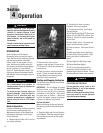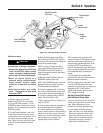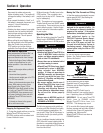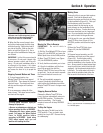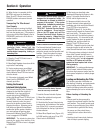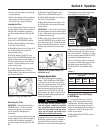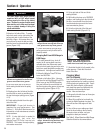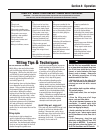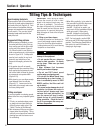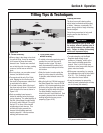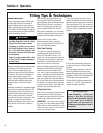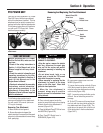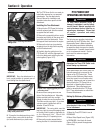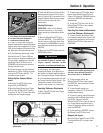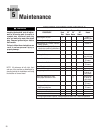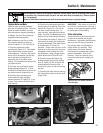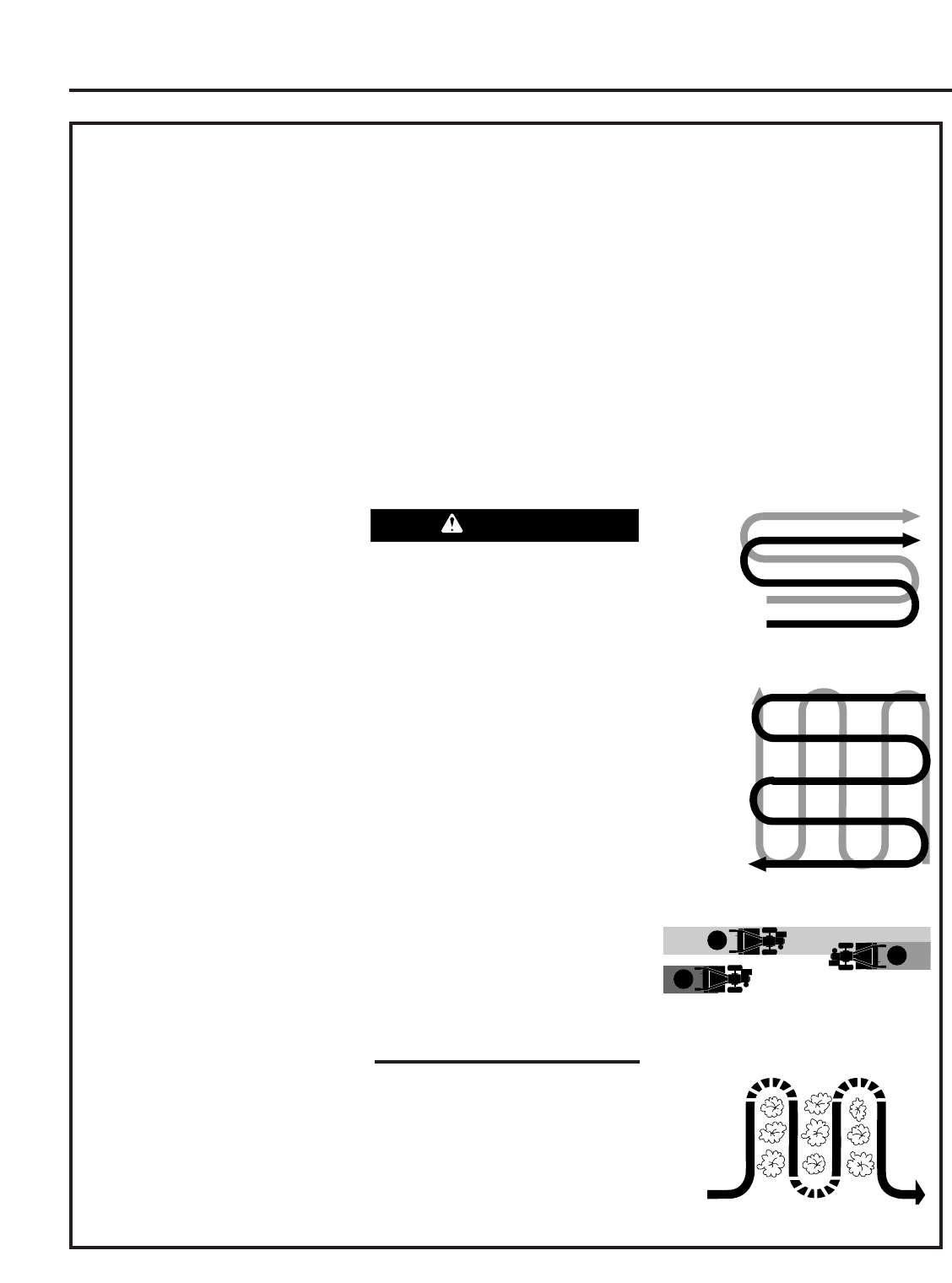
Section 4: Operation
22
Avoid making footprints
When possible, walk on the untilled side
of the unit to avoid making footprints in
the freshly tilled soil (Figure 4-4). Foot-
prints cause soil compaction that can
hamper root penetration and contribute
to soil erosion. They can also “plant”
unwanted weed seeds back into the
newly tilled soil.
Suggested tilling patterns
• When preparing a seedbed, go over
the same path twice in the first row,
then overlap one-half the tiller width
on the rest of the passes (Figure 4-
14). When finished in one direction,
make a second pass at a right angle as
shown in Figure 4-15. Overlap each
pass for best results (in very hard
ground it may take three or four
passes to thoroughly pulverize the
soil).
• If the garden size will not permit
lengthwise and then crosswise tilling,
then overlap the first passes by one-
half a tiller width, followed by succes-
sive passes at one-quarter width
(Figure 4-16).
• With planning, you can allow enough
room between rows to cultivate
(Figure 4-17). Leave room for the
hood width, plus enough extra room
for future plant growth.
Tilling on slopes
If you must garden on sloping ground,
please follow two very important guide-
lines:
1. Till only on moderate slopes, never
on steep inclines where footing is
difficult (review safety rules in the
“Safety” Section of this Manual).
2. We recommend tilling up and down
slopes rather than terracing. Tilling
vertically on a slope allows maximum
planting area and also leaves room
for cultivating.
IMPORTANT: When tilling on slopes,
be sure the correct oil level is main-
tained in the engine (check every one-
half hour of operation). The incline of
the slope will cause the oil to slant away
from its normal level and this can starve
engine parts of required lubrication.
Keep the engine oil level at the full point
at all times!
A. Tilling up and down slopes:
• To keep soil erosion to a minimum, be
sure to add enough organic matter to
the soil so that it has good moisture-
holding texture and try to avoid leaving
footprints or wheel marks.
• When tilling vertically, try to make the
first pass uphill as the tiller digs more
deeply going uphill than it does
downhill. In soft soil or weeds, you
may have to lift the handlebars slightly
while going uphill. When going
downhill, overlap the first pass by
about one-half the width of the tiller.
HINT: For best results, use the HIGH
belt range and SLOW wheel speed lever
position. See Changing Speed Belts in
this section for more information on
changing to high range.
Tilling Tips
&
Techniques
Figure 4-14
Figure 4-15
Figure 4-17
1
2
3
Figure 4-16
To avoid serious personal injury or
damage to the equipment:
• Do not operate tiller on a slope too
steep for safe operation. Go slowly
on any slope. Make sure you have
good footing.
• Wear footwear that increases
stability and reduces slippage.
• Do not use FAST wheel speed
position when on sloped ground.
• Do not shift the Wheel Speed Lever
when heading up or down a slope. If
lever is accidentally moved to FREE
WHEEL position, the tiller could roll
out of control.
• To prevent engine damage due to oil
starvation (on slopes,the engine is
inclined and oil moves away from
surfaces that need lubrication), be
sure the correct oil level is main-
tained during all uphill/downhill
tilling operations. Check the level of
the oil in your engine after every one-
half hour of operation.
WARNING



